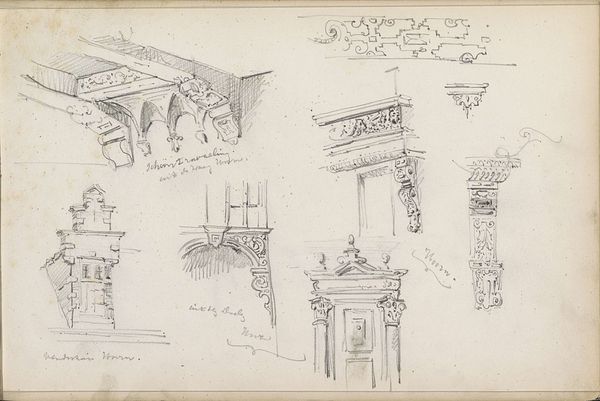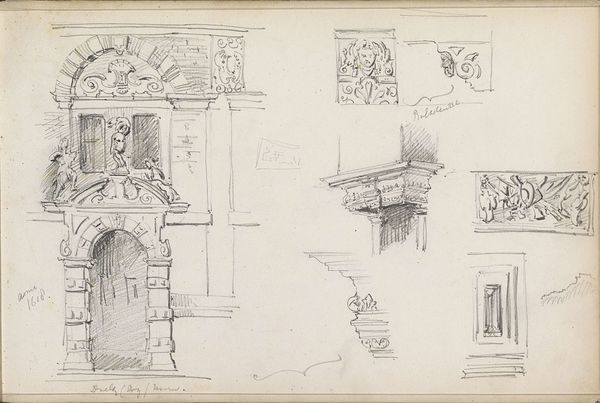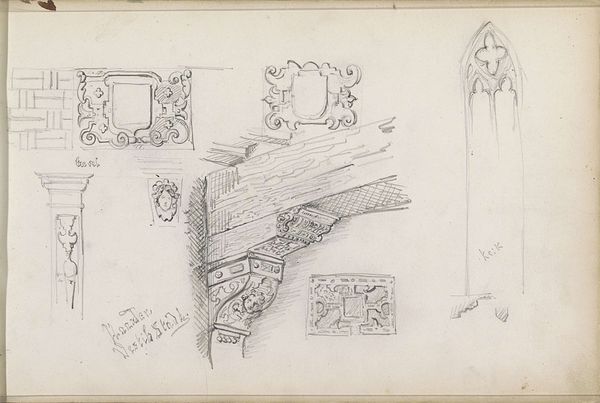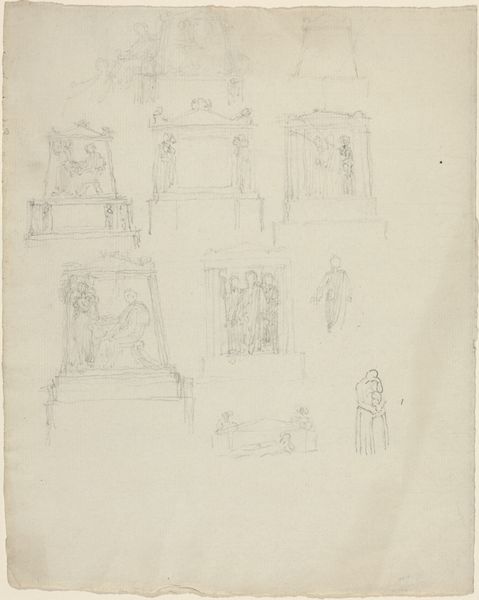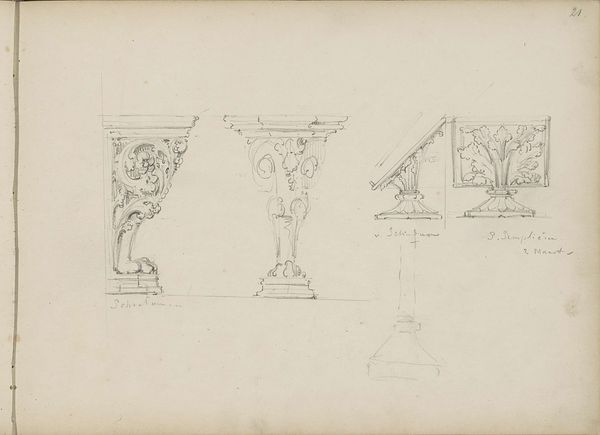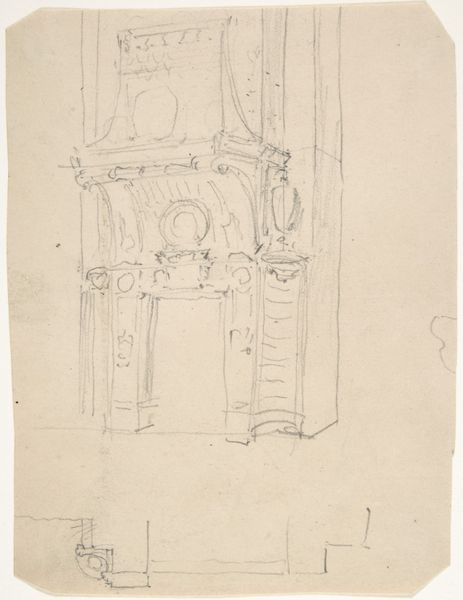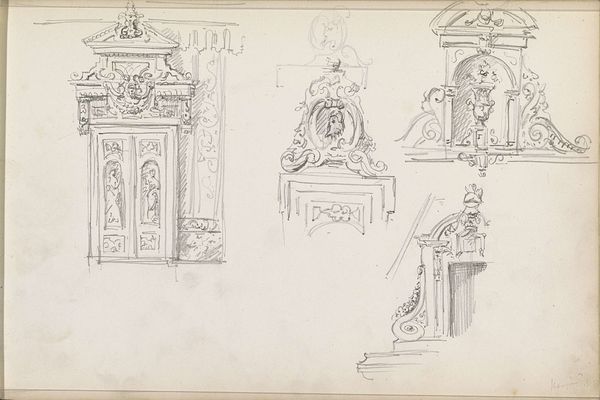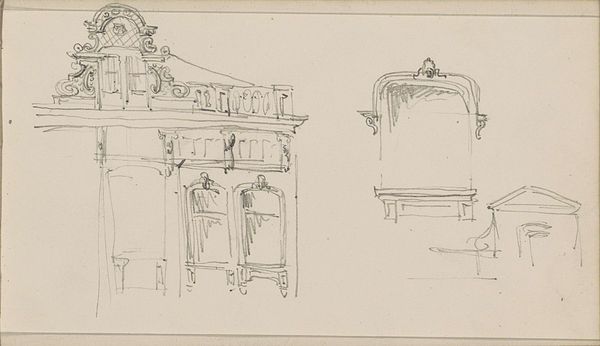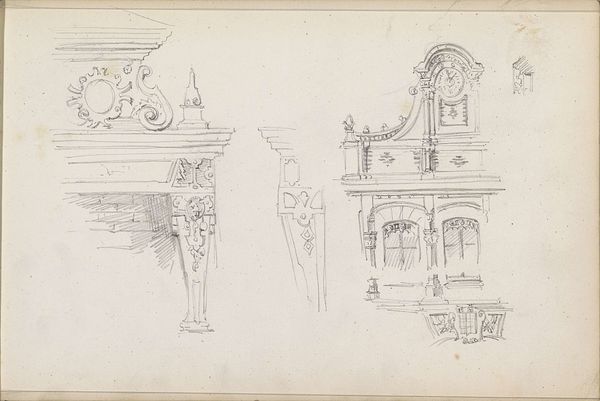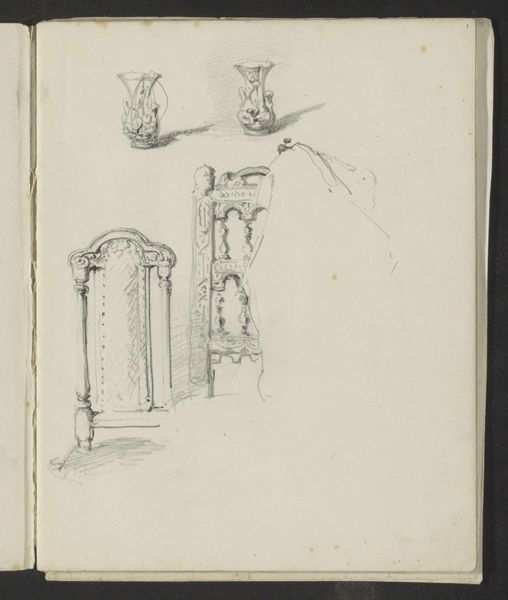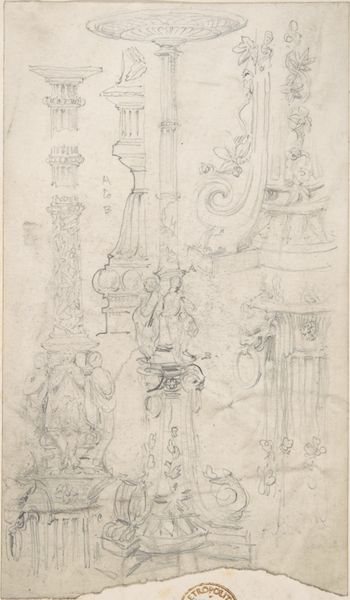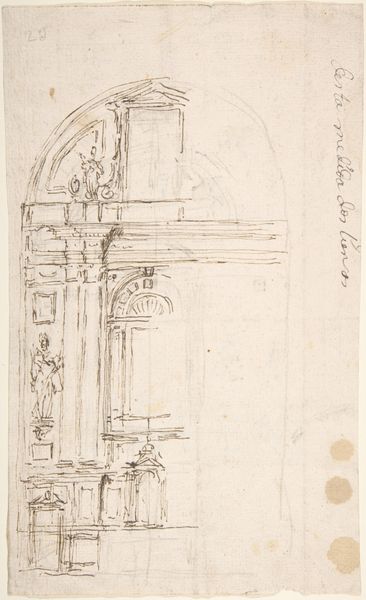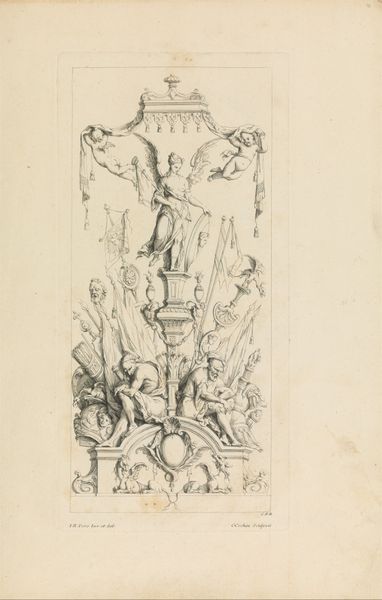
drawing, pencil
#
drawing
#
landscape
#
figuration
#
pencil
#
history-painting
#
academic-art
Copyright: Rijks Museum: Open Domain
Editor: So, we're looking at Isaac Gosschalk's pencil drawing from the 1860s, "Representation of Adam and Eve in an Ornamental Frame." I'm struck by the detail. It's delicate, like a fleeting thought. What captures your attention most? Curator: Its incompleteness. Look at those tantalizing, unfinished edges and snippets of architectural detail! To me, this speaks of inspiration itself – those electrifying moments when the seed of an idea bursts forth, raw and untamed. Do you notice how Adam and Eve, centrally placed, almost appear secondary to the elaborate framework encompassing them? It’s as if the artist is contemplating not just the biblical narrative, but the very vessel that carries it – art itself. Editor: I hadn’t thought about it that way! The frame almost overpowers the main subject. Is that typical of academic art? Curator: Perhaps. I imagine Gosschalk wrestling with this theme—the "History Painting"—struggling to fully contain it within tradition, hence all these details from the world around the narrative. The landscape style seems to pull it apart! It makes me think of the constant tension between creative vision and academic constraints, the kind of exhilarating struggle that births something truly unique. Editor: So it's not just a depiction of Adam and Eve, but a reflection on art itself and perhaps even Gosschalk's journey as an artist. I like that perspective! Curator: Absolutely. It shows a real human being, pouring over a vision and trying to bring it into reality with pencil and thought, with an ornamental cage to allow it a view to a landscape... what else can an artist do? Editor: I see it completely differently now. Thanks, that really opened my eyes!
Comments
No comments
Be the first to comment and join the conversation on the ultimate creative platform.

